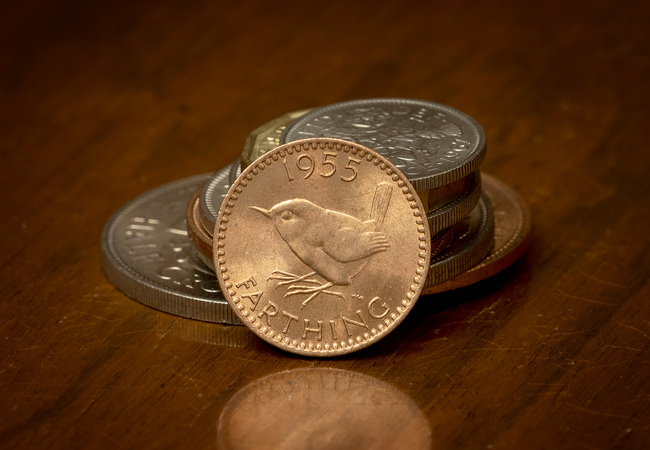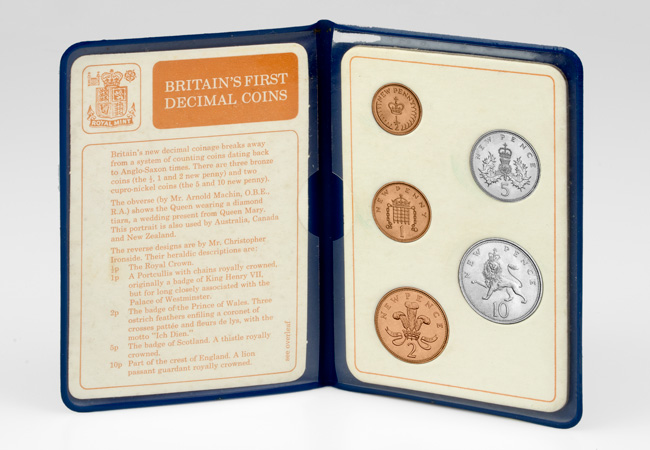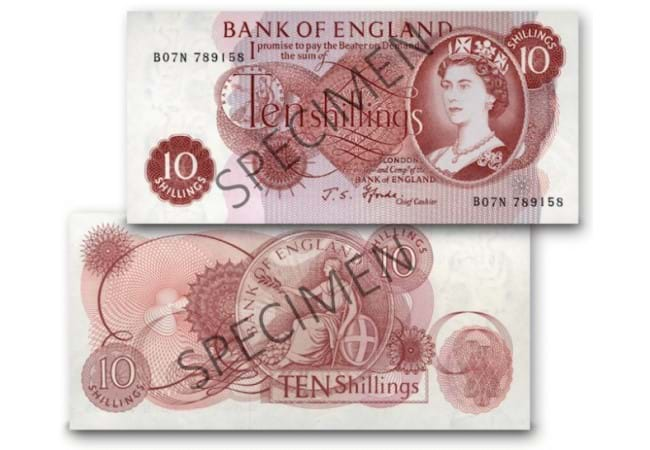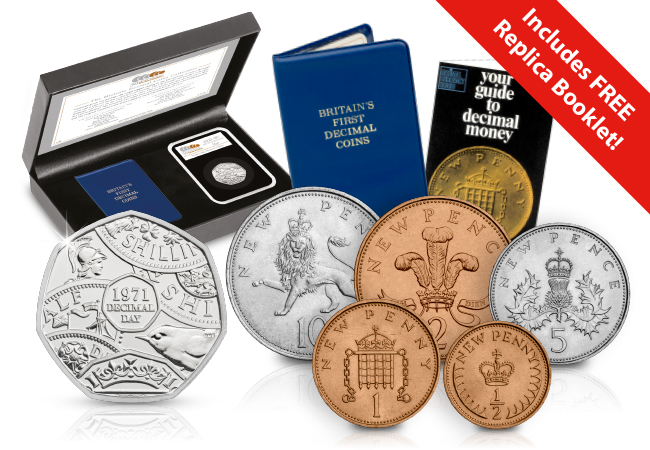Posts Tagged ‘decimal day’
Decimalisation: Your top five questions answered
This year marks the 50th anniversary of the Decimalisation of our currency. On 15th February 1971, known as Decimal Day (or D-Day), the country switched to the decimal currency (based on multiples of 10 and 100) that we are familiar with today. But what happened on that day, and why is it important to collectors?
Before then, Britain used a monetary system that dated thousands of years back to the Roman Empire! The problem with the old Pounds, Shillings, and Pence system (sometimes called ‘old money’) is that it was based on multiples of 12 and 240. This made it quite confusing – there were 12 pennies in a shilling and 240 pennies in a pound, and 20 shillings made a pound – certainly not easy to add up in your head!
We get a lot of questions about Decimalisation, so before we celebrate the anniversary next month, we’ve answered some of your top questions about the biggest change to UK currency ever!

What were the coins called before Decimalisation?
The Pounds (£), Shillings (/-) and Pence (d) system included lots of coins with very different names to today’s coinage. A lot of these coins were given slang nicknames, such as ‘thrupence’ or ‘thrupny bit’ for a threepence, or a tanner for a sixpence. A Shilling was sometimes called a ‘bob’, and a ten shilling note would often be referred to as a ‘ten-bob‘ note.
| Pre-decimal Coin | Amount | Decimal Equivalent |
| Halfpenny | ½d. | 5⁄24p ≈ 0.208p |
| Penny | 1d. | 5⁄12p ≈ 0.417p |
| Threepence | 3d. | 1¼p |
| Sixpence | 6d. | 2½p |
| Shilling | 1/- | 5p |
| Florin | 2/- | 10p |
| Half Crown | 2/6 | 12½p |
| Crown | 5/- | 25p |
Who was the first country to go decimal?
Did you know the UK wasn’t the first country to go decimal? In fact, as early as 1704 Russia introduced the Ruble which was equal to 100 Kopecks, making it the first country to have a decimal coin. It was followed by France which introduced the Franc in 1795. Although the UK was one of the last to turn decimal, discussions first started in Britain as early as the 1820s, but the idea didn’t take off well with the public so it wasn’t until 150 years later that it actually happened.
When were the first decimal coins issued?
The first new decimal coins were actually issued before decimal day in 1971 – three years earlier in fact! In 1968 the plans for decimalisation were set in motion. To try and help the public acclimatise to the new decimal coins, the 5p and 10p, were issued, followed by the 50p a year later in 1969. This meant that the coins circulated alongside their pre-decimal siblings (Shilling, Florin, and 10 bob note) and were used interchangeably. By 1971 when the pre-decimal coinage ceased to be legal tender, only 3 new coins would be introduced (Half pence, one pence, two pence), making the jump to decimal currency a little easier for the public.

Why did the banks close for four whole days?
In 1971, very few banks used digital systems so on 10th February the banks closed for four days until Decimal Day. This allowed all outstanding cheques to be cleared in old money and all customers accounts to be converted into decimal coinage – and because most banks weren’t computerised, this had to be done manually! February was actually chosen as it was the quietest time of year for banks, shops, and public transport. It’s hard to imagine the banks closing for four days in a row now!

How did people compare between the two currencies?
Many people worried about shopkeepers inflating the prices of products during the changeover, but with a public information campaign that ran for almost 2 years prior, many people already had some idea of the conversions. And to help, currency convertors were made available to people, and shops displayed the prices in both currencies before and after Decimal Day. People could also continue to pay in old money, but they would receive their change in new money.
It took some time, but soon the decimal currency became familiar to everyone and continues to be the biggest change to UK coinage in thousands of years. In the lead up to the 50th anniversary, we’ll be issuing a series of blogs telling you all you need to know about this iconic moment in numismatic history, so make sure to stay tuned!
If you’re interested:
You can commemorate the 50th anniversary of Decimalisation now with the Historic Decimal Coins Collection! Including an ORIGINAL Decimal Coin Wallet, BRAND NEW BU 50p, and a FREE replica booklet. Click here to secure your Historic Decimal Coins Collection for JUST £29.99!

